On October 5, an electoral college appointed by Syria’s interim president, Ahmed Al-Sharaa, elected two-thirds of a national assembly that will draft a permanent constitution within the next 30 months. Coincidentally, October also marks the 20th anniversary of Iraq’s constitutional referendum. The parallels between Iraq and Syria—shared ethno-religious diversity, a Baathist past, geostrategic location, and experience with the trauma of sanctions and ISIS—offer a valuable opportunity for Syria to learn from its eastern neighbor. Chief among these lessons is the promise of federalism, a model that Iraq adopted to manage its internal divisions and preserve its unity.
Lessons from Iraq
From interim to permanent constitutions
Iraq’s constitutional referendum, held on October 15, 2005, was shaped by national aspirations during the occupation. Although the referendum was tainted by the ongoing U.S. military presence, it also reflected an Iraqi-led attempt to reclaim sovereignty and to establish an inclusive social contract.
Like Syria today, Iraq once operated under an interim constitution. The Transitional Administrative Law (TAL), formed under the authority of L. Paul Bremer, the administrator of the U.S. Coalition Provisional Authority, drew upon input from Iraq’s exiled opposition, but it did not reflect Iraq’s diverse national voices. Iraqi leaders, including Grand Ayatollah Ali al-Sistani and religious authorities in Najaf, pushed for an Iraqi-led constitutional process, resulting in elections for a representative body to draft the constitution and a nationwide referendum to ratify it.
Syrians are now drafting their constitution without the toxicity and urgency brought on by foreign occupation. While the new Syrian government must reclaim its sovereignty from fragmented internal factions and contend with pressures from its foreign backers and the United States, this gives Syria certain advantages over Iraq. Nevertheless, it is imperative that Syria’s constitution is negotiated, written, and legitimized by Syrians themselves.
The interim Syrian constitution, which will last five years, was ratified by al-Sharaa and reflects his vision for a post-Baathist Syria. Notably, it maintains Islam’s centrality to the state’s identity but makes no mention of democracy. Syrians, who fought against authoritarianism for over a decade, will have to ensure that their permanent constitution reflects their diverse views and interests and is ultimately ratified by them. The recently held elections that selected two-thirds of the country’s constitutional assembly were far from democratic, and they excluded Sweida and areas controlled by the Syrian Democratic Forces (SDF). Within this context, Syrian civil society, hardened by years in exile and opposition, must insist on procedures like referendums to secure country-wide buy-in and ensure the constitution’s legitimacy.
Legitimacy and representation
It is logistically difficult to hold general elections during violence-ridden transitions. Iraqis held elections amid daily suicide attacks and unrest, but like Syrians today, they were eager to turn toward a new future and away from the horrors of the Baathist regime. Election turnouts for the constitution-writing assembly, the constitutional referendum, and the first parliament were notably high in Iraq. This public energy and enthusiasm should be harvested because, as the Iraqi case shows, it tends to be short-lived once the difficulties of the political transition set in.
The public enthusiasm for the constitution and the change it represented was not shared by all segments of Iraqi society. Sunni leaders boycotted the first election, which was intended to vote on a constitutional-writing body. Sunni representatives had to be invited into the council to ensure representation. Later, Sunni-majority provinces overwhelmingly voted against the constitution, but they were unable to overturn it.
Meanwhile, the Kurds and Shias, both winners of the post-2003 order, benefited greatly from the new constitution. The Kurds, who had enjoyed semi-autonomy since 1991, were at a significant advantage in terms of their organization and influence. They were able to constitutionally secure their semi-autonomy through a new federal structure for the Iraqi state, and their efforts were supported by Iraq’s Shia majority, which had been strongly allied with the Kurds during their days in the opposition. After living through decades of Baathist persecution, including a genocidal campaign in the 1980s, federalism was the only avenue for ensuring Kurdish buy-in to the new Iraqi state.
The challenges of implementation
Federalism was a new concept in Iraq, and its implementation has faced many challenges over the years. Since the Kurdish parties were better organized, it appeared at times that the new Iraqi state was composed of two states rather than one federal entity. Some Iraqis criticized the constitution for enabling this, though they should have praised it for maintaining Iraq’s territorial integrity. In 2017, Iraqi Kurdistan attempted an independence referendum, but that move was not tolerated by the federal government in Baghdad, which resorted to the constitution to argue for the referendum’s illegality.
Yet despite these challenges, the Iraqi Constitution has helped guarantee Kurdish rights. Even after the 2017 referendum weakened Iraqi Kurdistan vis-à-vis Baghdad, the constitution protected the region’s federal status. Thus, whether Baghdad grows stronger or weaker, the constitution ensures the state’s sovereignty and the rights of its individual components, thereby averting separatism.
The promise of federalism
Today, Syria is grappling with the same challenge of governing an ethnically and religiously diverse state that has emerged from the shadows of entrenched dictatorship. And like Iraq in 2003, the Kurds of Syria today have been governing themselves for over a decade now. It will be very hard to convince them to give up their rights.
Al-Sharaa views Iraq as a cautionary tale and has repeatedly called for a centralized state. In March 2025, he signed an agreement, which is yet to be implemented, with Kurdish leader Mazloum Abdi to incorporate the SDF into the Syrian military. While the SDF has ceded control over mixed areas in Aleppo province, it has not implemented the agreement in Kurdish strongholds in the northeast. The Autonomous Administration of North and East Syria (AANES), the administrative and political body that has run affairs in Syrian Kurdistan since the breakout of the Syrian civil war, has been clear that Syrian Kurds seek rights and not separatism.
A recent meeting between Damascus and Abdi similarly highlighted that negotiations are stalled over differing interpretations of “decentralization.” In an interview we conducted with Iraqi President Abdul Latif Rashid, a former member of the Kurdish and Iraqi opposition group to Saddam Hussein, he stressed that Iraq supports change in Syria and hopes for an inclusive democratization process in Syria, but that Syrians themselves should decide what administrative form that should take. Rashid’s comments reflect the relative success of Iraq’s federalist model.
In its best form, federalism preserves a region’s cultural identity while allowing for more efficient, stronger local governance. It allows local governments to manage their reconstruction and social services without having to defer to officials in a distant capital. In this way, federalism ensures a higher quality of life and equal citizenship for all.
Iraq’s constitution has created space for other federal regions to form in Iraq beyond Kurdistan. The southernmost province of Basra, for example, along with its immediate neighbors, has attempted to form a federal unit for some time now, albeit unsuccessfully. Syria should learn from the Iraqi case and attempt a more unified federalism across the board from the onset.
Federalism also carries a powerful symbolic weight with historically marginalized groups. In its preamble, the Iraqi Constitution recognizes various ethnicities and languages and elevates Kurdish to an official language. These are seemingly small changes, but they reflect a commitment to an inclusive nationhood that had been denied for decades under Baathism’s Arab supremacism. Al-Sharaa seems intent on denying these symbolic gestures, as evidenced by the recent decision not to recognize Nowruz, the Kurdish New Year, as a public holiday in Syria.
Conclusion
Although Iraq and Syria have different demographics, both countries are ethnically and religiously diverse and have similar experiences with Baathist authoritarianism. Their diversity has frequently been framed as a weakness and evidence of artificial statehood. But while building a state and the concept of citizenry amongst a diverse population is a difficult task, it also presents certain opportunities. Syria’s leaders, who have found their way from the battlefield to political power, should understand that while international support will come and go, true stability and social harmony will only come from within through internal consensus. The consensus on the future Syrian state must be reached by Syrians, and the constitution is the embodiment of that agreement. Federalism, if done right, offers the best path forward.
The Brookings Institution is committed to quality, independence, and impact.
We are supported by a diverse array of funders. In line with our values and policies, each Brookings publication represents the sole views of its author(s).
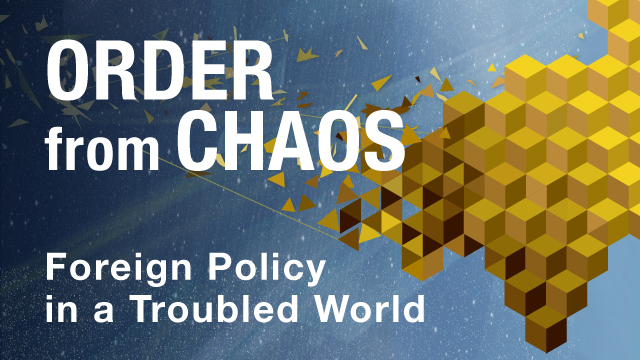


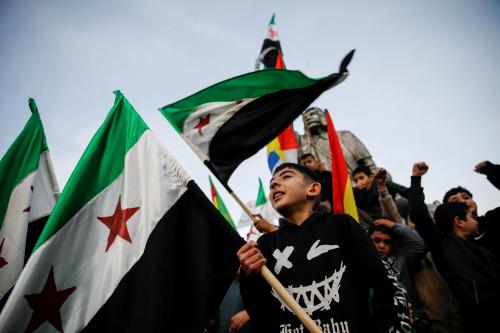
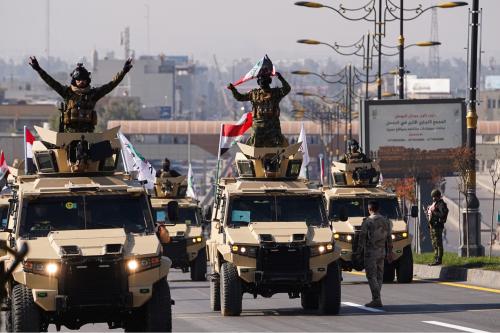
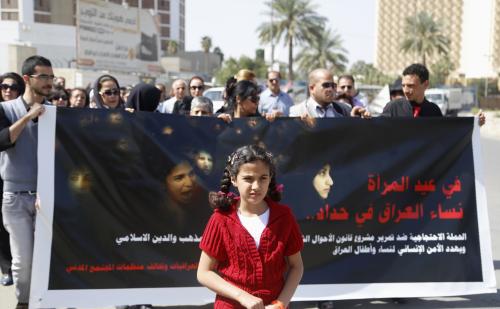

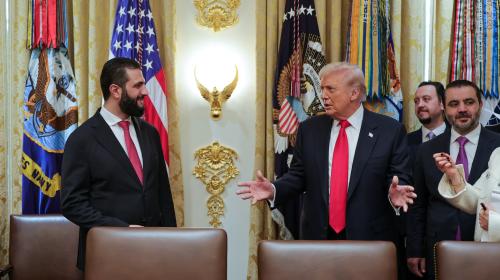
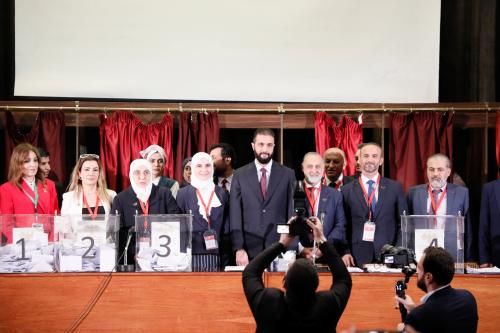
Commentary
Iraqi lessons for Syria’s post-Baathist constitution
October 20, 2025